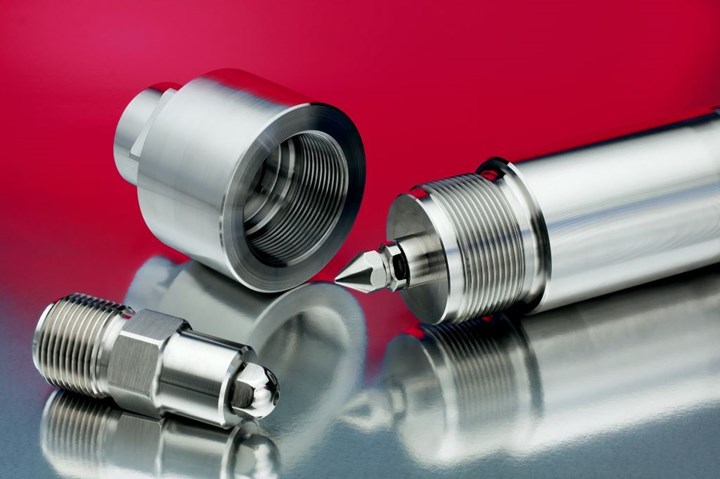Array of Plasticizing Components Displayed
Zeiger Industries will bring screw-tip assemblies, screws, plug-and-play LSR kits and more to the PTXPO.
Among the products and technologies Zeiger Industries will be displaying at the PTXPO (March 29-31; Donald E. Stephens Convention Center; Rosemont, Ill.) will be the Mallard Z4 screw tip assemblies and its GP (General Purpose) and ZP (Zeiger Performance) screws. The company will also showcase its Continuous Taper Front End (CTFE) products, which are designed to eliminate material hang up areas and thereby reduce or eliminate black specks when customers are processing optically clear resins such as PC and PMMA.
For processors molding halogen-free flame retardants, Zeiger will address the challenges of corrosive attack and abrasive wear on their screws and check ring valves. The company not only offers optimized screw designs for molding these materials, but it is also able to increase component life by marrying these designs with the novel steels available today in the marketplace. In addition to HFFR processing solutions, Zeiger has successfully helped processors overcome the challenges of sulfidation that occurs when molding materials such as PSU and PPS.
Lastly, Zeiger will have one of its LSR Plug-n-Pay kits on display for those processors looking for a cost effective way to convert excess thermoplastic capacity into LSR ready technology.

Zeiger Industries will display a variety of machine components at the PTXPO.
Related Content
-
Understanding the Effect of Pressure Losses on Injection Molded Parts
The compressibility of plastics as a class of materials means the pressure punched into the machine control and the pressure the melt experiences at the end of fill within the mold will be very different. What does this difference mean for process consistency and part quality?
-
Got Streaks or Black Specs? Here’s How to Find and Fix Them
Determining the source of streaking or contamination in your molded parts is a critical step in perfecting your purging procedures ultimately saving you time and money.
-
Using Data to Pinpoint Cosmetic Defect Causes in Injection Molded Parts
Taking a step back and identifying the root cause of a cosmetic flaw can help molders focus on what corrective actions need to be taken.


